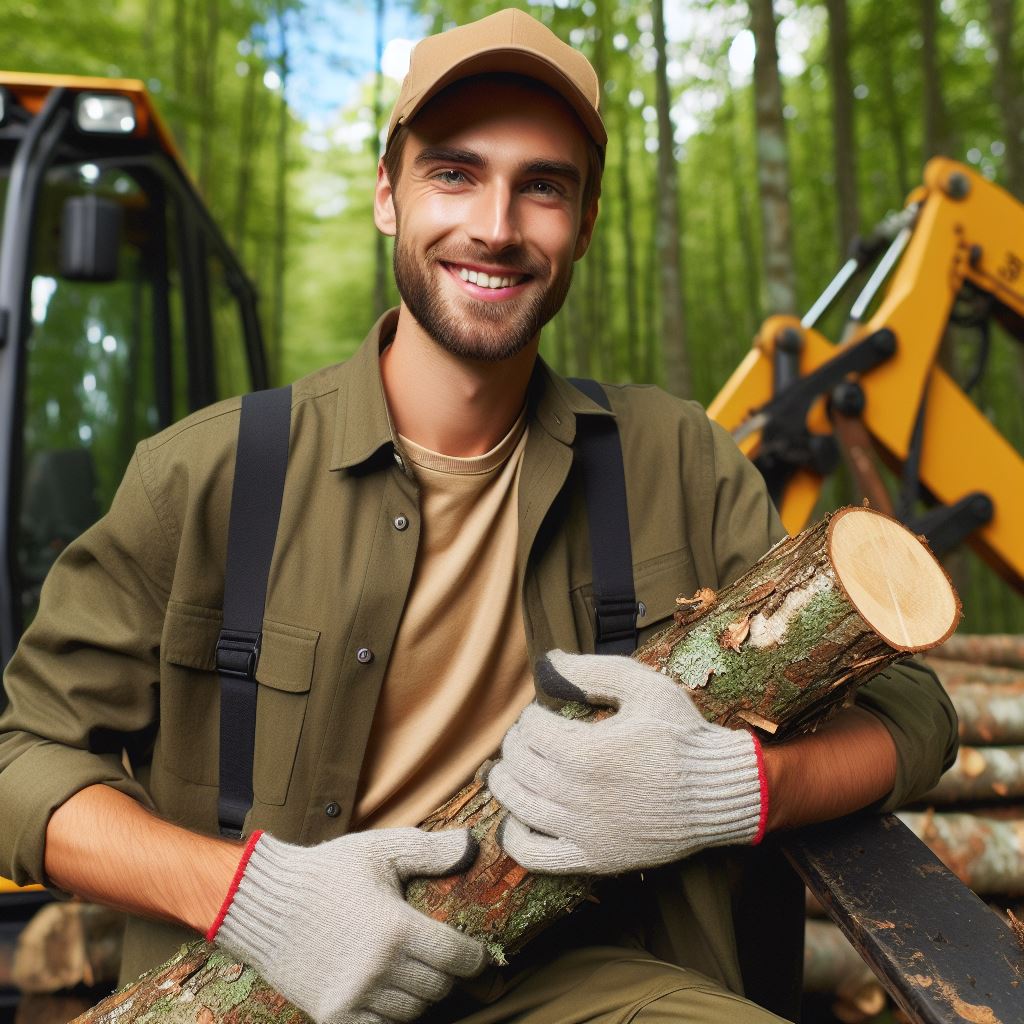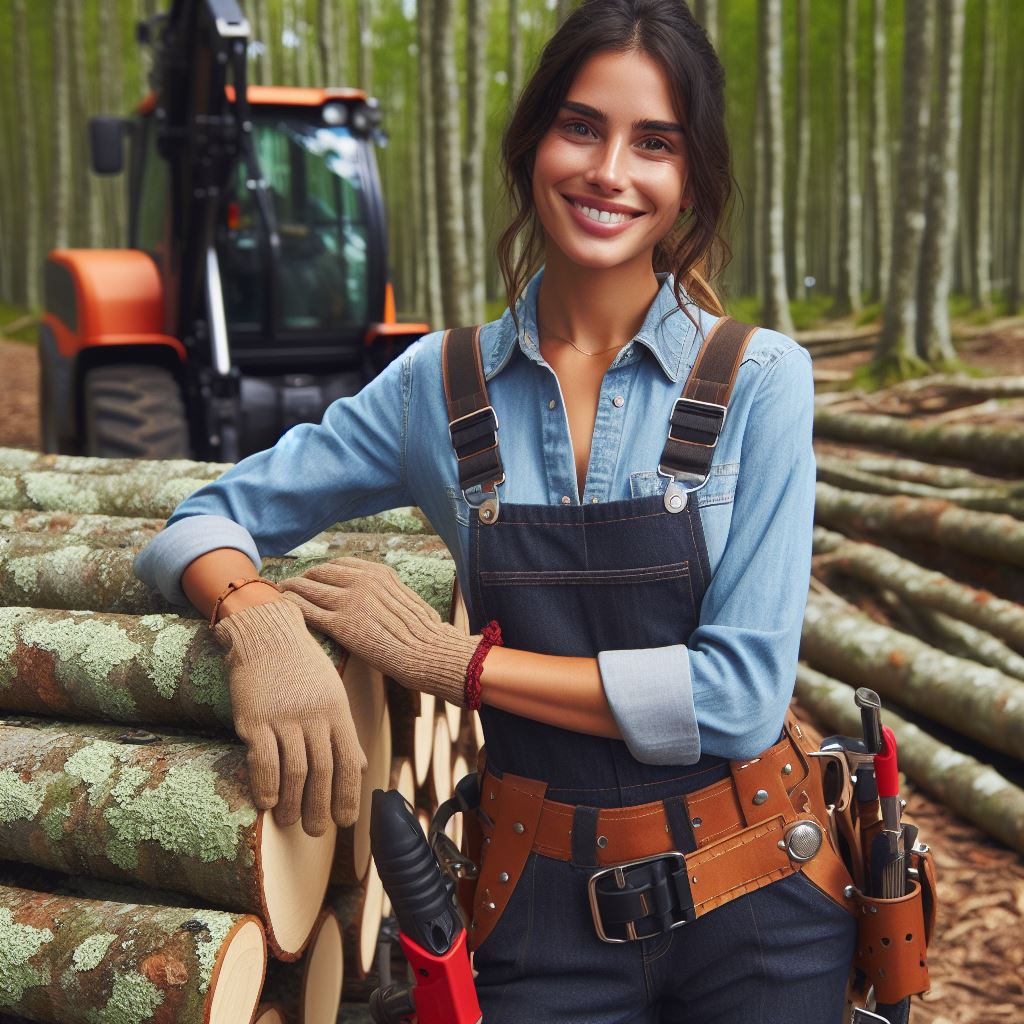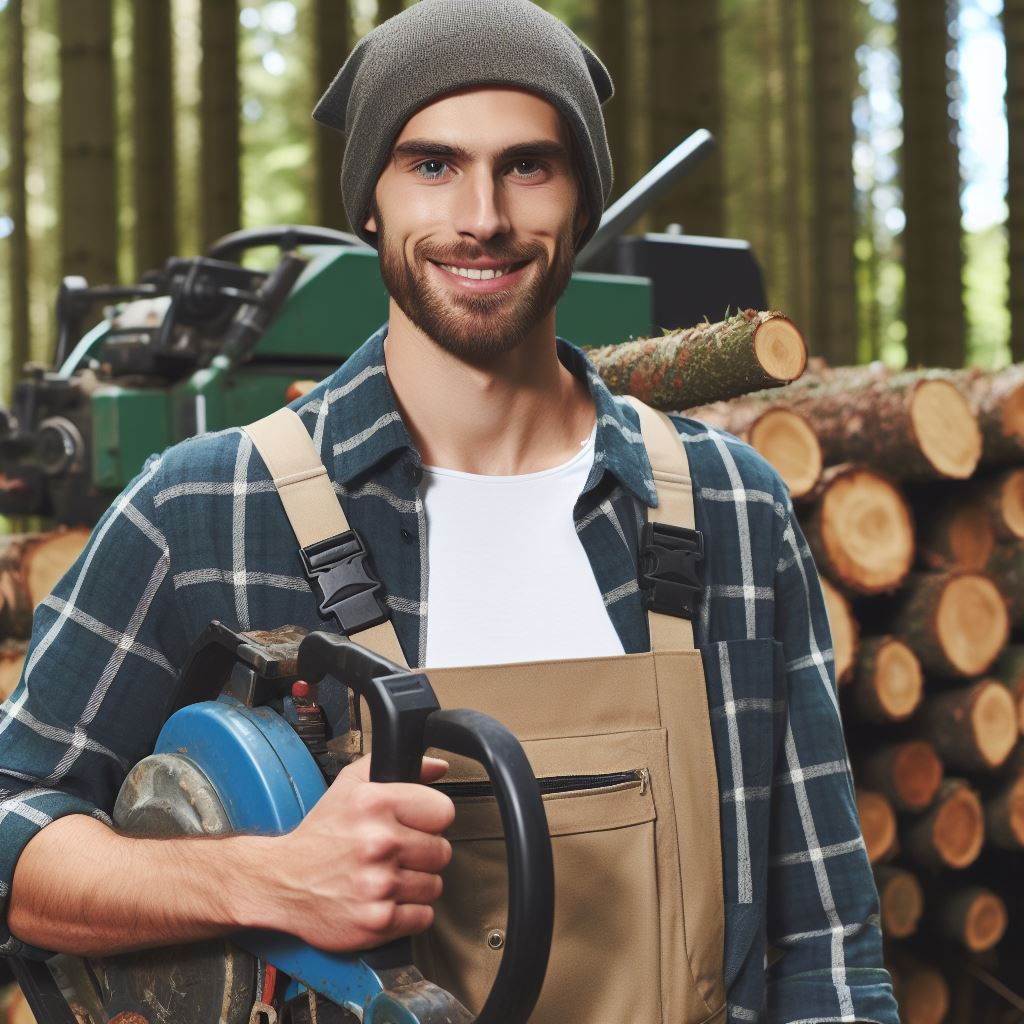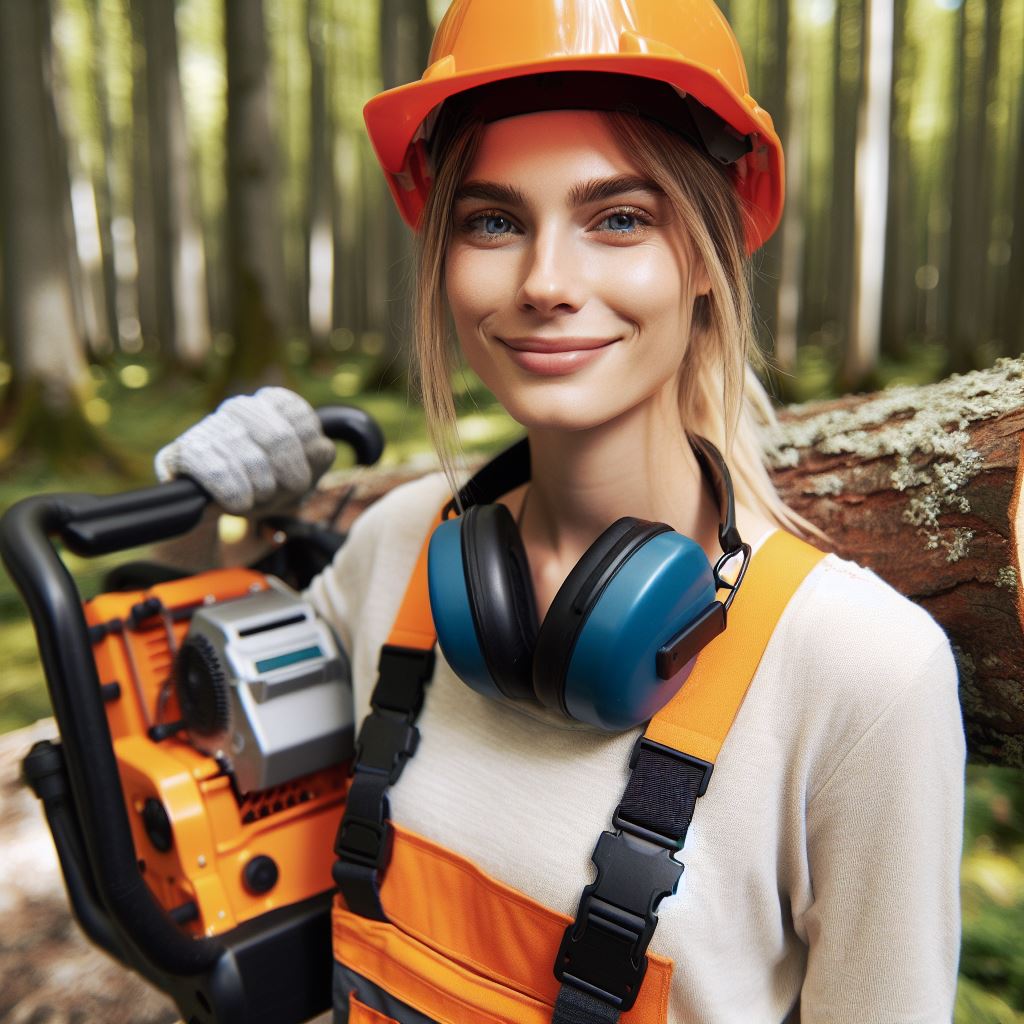Introduction
The forestry industry in New Zealand relies heavily on the use of specialized equipment to efficiently harvest, process, and transport timber.
This post will delve into the critical role that forestry equipment plays in New Zealand’s forestry sector, highlighting the importance and relevance of having the right tools for the job.
From chainsaws and harvesters to skidders and trucks, each piece of equipment serves a vital function in the forestry supply chain.
With New Zealand’s vast forests and rugged terrain, the proper equipment is essential for maximizing productivity while ensuring worker safety and environmental sustainability.
The significance of selecting the appropriate equipment cannot be overstated, as it directly impacts the efficiency, cost-effectiveness, and overall success of forestry operations.
Moreover, having the right equipment enhances operational flexibility, allowing forestry companies to adapt to changing market demands and environmental conditions.
In this post, we will explore the various types of forestry equipment commonly used in New Zealand, examining their features, benefits, and considerations for selection and maintenance.
By understanding the essentials of forestry equipment in New Zealand, industry professionals can make informed decisions to optimize their operations and contribute to the sustainable management of the country’s valuable forest resources.
Through this exploration, we aim to provide valuable insights into the dynamic and evolving landscape of forestry equipment in New Zealand, emphasizing the critical role it plays in driving innovation, efficiency, and competitiveness in the industry.
Chainsaws
Types of Chainsaws commonly used in New Zealand
- Gas-powered chainsaws: Suitable for heavy-duty tasks, such as cutting large trees.
- Electric chainsaws: Ideal for light to medium-duty tasks, such as pruning and small tree cutting.
- Battery-powered chainsaws: Portable and environment-friendly, great for light and occasional use.
Features and Benefits of each type
- Gas-powered chainsaws: Offers more power and longer running time, suited for professional forestry work.
- Electric chainsaws: Lightweight, easy to handle, and produce less noise, making them perfect for residential use.
- Battery-powered chainsaws: Quiet, emissions-free operation, and require less maintenance.
Tips for choosing the right chainsaw based on specific forestry needs
- Consider the intended use: Determine whether you need it for heavy-duty or light-duty tasks.
- Power source: Choose between gas, electric, or battery-powered chainsaw based on your preferences and requirements.
- Bar length: Longer bars are suitable for larger trees, while shorter bars work well for precision cutting.
- Weight and maneuverability: Ensure the chainsaw is easy to handle, especially for prolonged use.
- Safety features: Look for features like anti-vibration systems, chain brakes, and ergonomic designs.
Regulations and Safety Considerations for chainsaw use in NZ
- Certification: Operators must have a valid and recognized chainsaw operator certification.
- Protective gear: Always wear proper protective equipment, including helmet, gloves, safety glasses, and chainsaw chaps.
- Training: Seek proper training on chainsaw operation, maintenance, and safety practices to avoid accidents.
- Environmental regulations: Follow guidelines set by the Department of Conservation to protect native flora and fauna.
- Proper maintenance: Regularly inspect and maintain your chainsaw to ensure safe and efficient operation.
In essence, selecting the right chainsaw for forestry work in New Zealand is crucial to maximize productivity and ensure safety.
Understand the differences between gas-powered, electric, and battery-powered chainsaws.
Consider the features and benefits of each type, such as power, portability, and environmental impact.
Choose the chainsaw based on the specific forestry needs, including intended use, power source, bar length, weight, maneuverability, and safety features.
Additionally, adhere to regulations and safety considerations, including certification, protective gear, training, environmental regulations, and maintenance practices.
By following these guidelines, you can make informed decisions and safely operate a chainsaw in New Zealand’s forestry industry.
Personalized Career Consulting
Unlock your potential with expert career advice tailored to your goals. Get personalized guidance and actionable steps toward your dream career in New Zealand.
Get StartedRead: Forestry Careers: NZ Opportunities
Logging Trucks
Role and Significance of Logging Trucks in the Forestry Industry
- Logging trucks play a crucial role in the forestry industry by transporting harvested timber from the forest to processing facilities or storage areas.
- These trucks are the backbone of the timber supply chain, ensuring an efficient and reliable transportation system.
- They significantly contribute to the economic growth of the industry and allow for sustainable timber harvesting and forest management practices.
Different Types and Sizes of Logging Trucks in Use
- Logging trucks come in various types, depending on the terrain, timber volume, and operational requirements.
- The most common types are straight truck and trailer combinations, pole trucks, and self-loaders.
- Each type has different load capacities, ranging from small trucks capable of carrying a few tons to large ones that handle over a hundred tons of timber.
- The selection of the appropriate logging truck depends on the specific needs and characteristics of the logging operation.
Features and Specifications to Consider when Selecting a Logging Truck
- One essential feature to consider is the load capacity of the logging truck, ensuring it meets the hauling requirements.
- The truck’s engine power and torque directly influence its ability to navigate steep slopes or difficult terrains.
- Suspension systems should be sturdy enough to handle rough forest roads and reduce timber damage during transportation.
- Optimal braking systems are critical for safety, especially when hauling heavy loads downhill.
- The maneuverability and turning radius of the logging truck are vital for navigating tight and narrow forest roads.
- Fuel efficiency is another crucial consideration, as it impacts operational costs and environmental sustainability.
Legal Requirements and Industry Standards Regarding Logging Truck Operations in NZ
- In New Zealand, operators of logging trucks must comply with several legal requirements and industry standards.
- All drivers must hold a current and valid driver’s license that allows them to operate the specific class of vehicles they are driving.
- Regular vehicle maintenance and inspections, including brakes, tires, lights, and overall roadworthiness, are mandatory.
- Proper load securing techniques are essential to prevent the loss of timber or endangering road users.
- Logging truck operators must also adhere to specific weight restrictions to ensure road safety and prevent damage to infrastructure.
- The forestry industry has established codes of practice to ensure safe operations, including guidelines for fatigue management and driver training.
- Compliance with these legal and industry requirements is crucial to maintain a high level of safety and professionalism in the forestry sector.
Overall, logging trucks are integral to the forestry industry in New Zealand, providing a reliable and efficient means of transporting harvested timber.
By understanding their role, different types and sizes, selecting the right features, and complying with legal requirements, logging truck operators can contribute to the sustainable growth of the industry while ensuring safety and environmental responsibility.
Read: Top Forestry Challenges in NZ

Harvesters
Definition and Importance of Harvesters in Forestry
A harvester is a crucial equipment used in the forestry industry to efficiently cut and process trees.
Its importance lies in its ability to increase productivity and reduce manual labor.
Different Types of Harvesters Used in NZ
- Wheeled Harvesters: These versatile machines are equipped with hydraulic hinged booms and attachments for felling and processing trees.
- Tracked Harvesters: Ideal for rough terrains, these machines offer stability and maneuverability while performing tree-cutting operations.
- Feller Bunchers: These specialized harvesters are designed to efficiently fell and bunch trees before processing.
Functions and Capabilities of Harvesters
Harvesters are equipped with various features and capabilities that enhance their functionality, such as:
- Computerized Control Systems: Enables precise cutting and optimum stem selection.
- Delimbing and Processing Attachments: Streamlines the removal of branches and processing of logs.
- Telematics: Provides real-time data on machine performance, fuel consumption, and maintenance needs.
Tips for Choosing the Right Harvester for Specific Forestry Operations
- Consider Tree Species and Size: Different harvesters are suitable for various tree species and sizes, so choose accordingly.
- Evaluate Terrain Conditions: Select a harvester that can effectively operate in the specific terrain of the forestry site.
- Assess Production Requirements: Determine the desired productivity and choose a harvester that can meet those needs efficiently.
Regulations and Safety Considerations for Harvester Use in NZ
- New Zealand Health and Safety at Work Act: Operators must adhere to this act, ensuring a safe working environment.
- Operator Training and Certification: Proper training is essential for operators to handle harvesters safely and effectively.
- Personal Protective Equipment (PPE): Operators should wear appropriate PPE, including helmets, ear protection, and protective clothing.
- Regular Maintenance and Inspections: Regular checks and maintenance of harvesters ensure they are in safe working condition.
In general, harvesters play a vital role in the forestry industry in NZ.
Understanding their different types, functions, and capabilities is crucial for selecting the right equipment for specific forestry operations.
Adhering to safety regulations and considerations ensures the well-being of operators and overall productivity in the industry.
Read: The Future of Forestry in NZ
Forwarders
The concept of forwarders and their role in the forestry industry
Forwarders stand as pivotal equipment within New Zealand’s forestry sector, serving a fundamental role in the extraction of timber resources.
These machines, often equipped with hydraulic cranes and loading bays, are specifically designed to transport harvested logs from the forest to designated collection points or processing facilities.
In essence, forwarders act as the logistical backbone of forestry operations, ensuring a seamless flow of timber from the forest floor to subsequent stages of processing or transportation.
Transform Your Career with a Professional CV and Cover Letter
Stand out to employers with an ATS-optimized resume and tailored cover letter designed to match your dream role. Let us craft your job application materials for success!
Get StartedDifferent types of forwarders commonly used in NZ
Within the New Zealand forestry landscape, two primary types of forwarders dominate: wheeled and tracked variants.
Wheeled forwarders are adept at traversing relatively even terrain, offering high-speed transport capabilities and agile maneuvering.
On the other hand, tracked forwarders excel in navigating rough, uneven landscapes, including steep slopes and dense forests, thanks to their enhanced traction and stability.
The choice between wheeled and tracked forwarders often hinges on the specific demands of the terrain and the scale of forestry operations.
Features and benefits of forwarders
Forwarders boast an array of features designed to optimize efficiency and productivity in timber extraction processes.
These machines typically offer substantial load capacities, allowing them to transport large volumes of logs in a single trip.
Furthermore, forwarders are equipped with articulated steering mechanisms, enabling tight turns and maneuverability in confined forest spaces.
Additionally, many modern forwarders are outfitted with sophisticated GPS and telemetry systems, enhancing precision in log collection and tracking.
Overall, the benefits of forwarders include increased operational efficiency, reduced labor requirements, and minimized environmental impact through optimized resource utilization.
Guidance on selecting the appropriate forwarder for specific forestry tasks
Choosing the appropriate forwarder involves a comprehensive assessment of various factors, including terrain characteristics, logistical requirements, and operational constraints.
For instance, in areas characterized by steep gradients or dense vegetation, tracked forwarders may offer superior traction and stability compared to wheeled counterparts.
Similarly, considerations such as load capacity, reach, and fuel efficiency play crucial roles in determining the most suitable forwarder for a given forestry task.
Ultimately, selecting the right forwarder entails striking a balance between performance capabilities, operational costs, and environmental considerations.
Regulations or safety considerations related to the use of forwarders in NZ
In New Zealand, the operation of forestry equipment, including forwarders, is subject to stringent regulatory standards aimed at safeguarding the well-being of workers and minimizing environmental risks.
Boost Your Career with a Standout LinkedIn Profile
Attract recruiters and expand your network with a fully optimized LinkedIn profile tailored to highlight your strengths and professional goals. Let your profile open doors to new opportunities!
Get OptimizedOperators of forwarders are required to undergo comprehensive training programs covering equipment operation, safety protocols, and emergency procedures.
Moreover, regulatory agencies impose regular inspections and maintenance requirements to ensure the proper functioning of forwarders and mitigate the risk of accidents or mechanical failures.
By adhering to these regulations and prioritizing safety considerations, forestry companies can uphold their commitment to responsible and sustainable resource management practices while safeguarding the welfare of their personnel.
Read: Forestry Education Paths in NZ
Conclusion
This blog post has highlighted the key points to consider when selecting forestry equipment in New Zealand.
It is important to emphasize the significance of having the right equipment for the forestry industry in New Zealand.
We encourage readers to carefully consider the outlined factors and make informed decisions when choosing their forestry equipment.
For further assistance or inquiries, we recommend exploring the additional resources or contacting the provided contact information.




